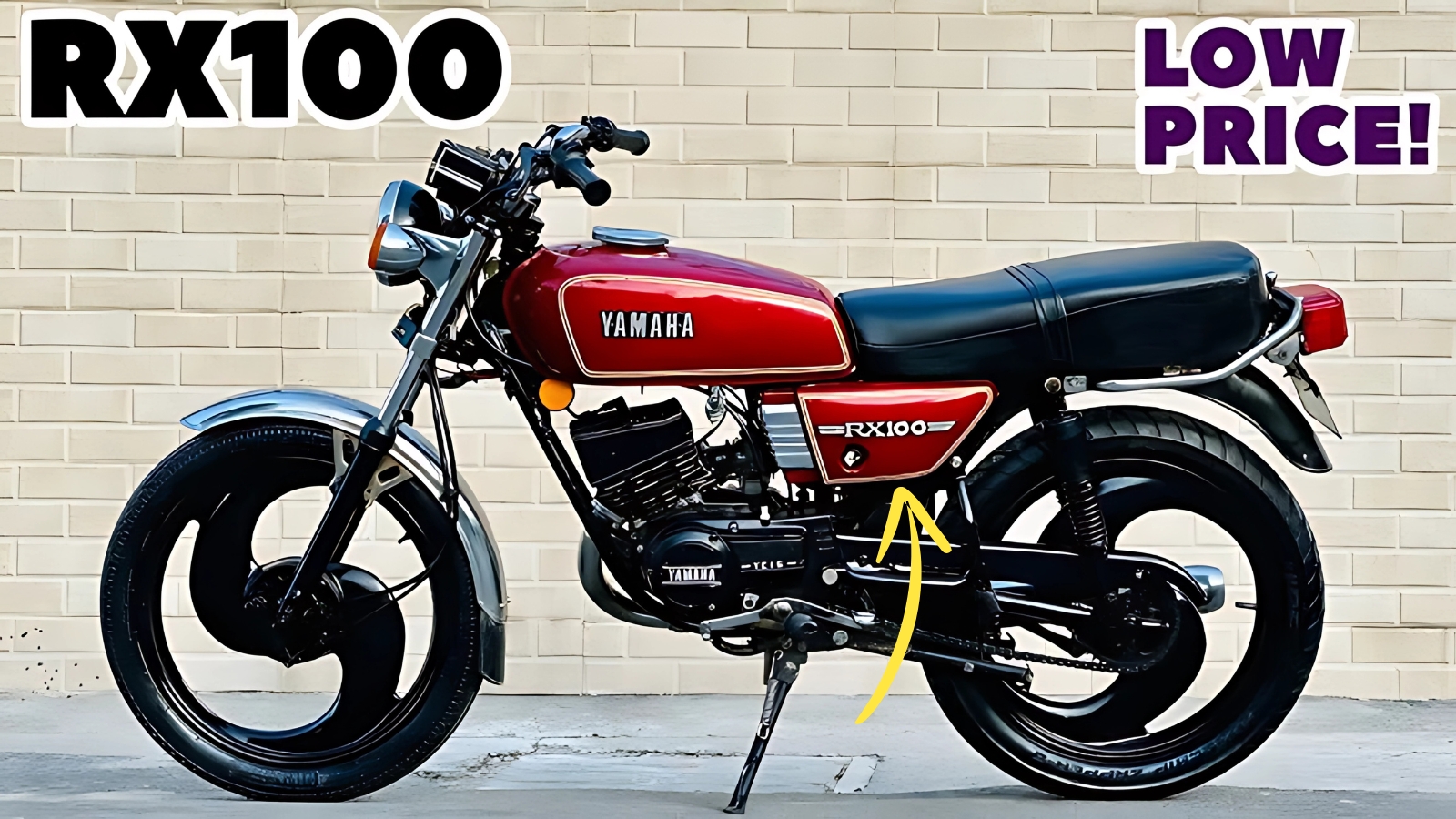Yamaha RX100: The old Yamaha service center in Pune’s Camp area became an unexpected pilgrimage site last week. Word had spread through WhatsApp groups and motorcycle forums that a mysterious crate marked “RX Project” had arrived. Within hours, hundreds of riders, young and old, gathered hoping for a glimpse of their beloved RX100’s possible return.
Veteran mechanic Prakash Yadav, who serviced RX100s for three decades, couldn’t hide his emotions. “I’ve seen grown men cry when their RX finally gave up. No other motorcycle created such attachment. If Yamaha truly brings it back, every mechanic in India will celebrate. This machine taught us what performance means.”
Cultural Impact Beyond Transportation
The RX100 represented more than mobility for an entire generation. Launched in 1985, it revolutionized Indian motorcycling with its two-stroke engine producing intoxicating performance. The distinctive “ring-ding-ding” exhaust note became the soundtrack of Indian streets through the 90s. Young men saved for years to own one, while worried parents tried discouraging purchases.
The motorcycle created its own ecosystem. Mechanics specialized exclusively in RX tuning. Spare parts dealers built businesses around maintaining aging examples. Racing circuits saw amateur competitions dominated by modified RXs. Even Bollywood featured the bike prominently, cementing its rebellious image.
Social dynamics shifted around RX ownership. Marriage proposals improved with an RX in the garage. Friend groups formed based on shared ownership. Weekend rides became rituals rather than mere travels. The RX100 didn’t just transport bodies – it carried dreams, aspirations, and identities.
Original Engineering Excellence Remembered
The 98cc two-stroke engine produced modest 11 bhp officially, but real-world performance felt explosive. Weighing just 103 kg, the power-to-weight ratio embarrassed larger motorcycles. The seven-speed gearbox offered precise ratios, while the autolube system eliminated pre-mixing hassles. Engineering simplicity meant reliable performance despite enthusiastic abuse.
Acceleration from 0-60 kmph happened in under 4 seconds – supercar territory then. The front disc brake, revolutionary for small motorcycles, provided confident stopping. The monoshock rear suspension, another segment first, delivered superior handling. These features seem basic now but represented cutting-edge technology in 1985.
Build quality set standards competitors struggled matching. The engine tolerated extreme RPMs without complaint. Chassis rigidity enabled confident cornering. Even electrical components lasted decades with basic maintenance. Many RX100s still run today, testament to over-engineering when manufacturers prioritized longevity over planned obsolescence.

Modern Revival Challenges Mount
Bringing back the RX100 faces significant hurdles. Two-stroke engines cannot meet current BS6 emission norms. The original’s fuel efficiency around 35 kmpl seems poor by modern standards. Safety regulations mandate ABS, impossible on the original design. Noise restrictions would eliminate the characteristic exhaust note enthusiasts cherish.
Yamaha’s challenge involves creating something capturing RX100’s spirit within modern constraints. A four-stroke engine must somehow replicate two-stroke character. Weight must stay minimal despite additional equipment. Performance should excite without breaking regulations. Pricing needs to remain accessible while incorporating expensive technology.
Industry insiders suggest Yamaha’s considering multiple approaches. A retro-styled 125cc might carry design cues while meeting regulations. A larger displacement version could provide performance thrills legally. Electric powertrains offer instant torque mimicking two-stroke response. Each solution brings compromises original fans might reject.
Market Dynamics Favor Revival
Current market conditions support launching a modern RX100. The retro motorcycle segment grows rapidly with successful models like Royal Enfield Classic and Honda CB350. Young riders seek differentiation from common commuters. Urban professionals with disposable income chase nostalgic connections. Even female riders show interest in lightweight performance motorcycles.
Used RX100 prices tell compelling stories. Well-maintained examples command ₹60,000-80,000 despite being decades old. Restored versions reach ₹1,50,000 without hesitation. These valuations for 30-year-old motorcycles indicate strong emotional connections transcending rational economics. A new version could capitalize on this sentiment.
Yamaha’s recent India strategy focuses on premium offerings rather than volume segments. The RX100’s revival fits this approach perfectly – commanding premium pricing through emotional appeal rather than specifications. Success wouldn’t require massive sales numbers, just passionate buyers willing to pay for experiences.
Community Expectations Run High
Online forums buzz with speculation and wish lists. Purists demand authentic two-stroke experience regardless of regulations. Pragmatists accept four-stroke reality but expect character preservation. Everyone agrees certain elements remain non-negotiable – lightweight construction, aggressive acceleration, and distinctive styling.
Motorcycle clubs dedicated to RX100s actively campaign for revival. Signature campaigns gather thousands of supporters. Social media hashtags trend regularly. YouTube videos featuring RX100s generate millions of views. This organic enthusiasm provides free marketing Yamaha couldn’t buy with advertising budgets.
Custom builders already create “modern” RX100s using newer engines in original frames. These projects command high prices, proving market appetite exists. Yamaha observing these trends understands demand extends beyond mere nostalgia to genuine willingness to purchase.
Skoda Kushaq launched in market with fabulous look – features is shandar
Yamaha RX100 The Legend’s Future Remains Uncertain
Whether Yamaha proceeds with revival remains officially unconfirmed. Technical challenges require innovative solutions. Market dynamics suggest favorable conditions. Brand value enhancement from association with RX100 legacy provides intangible benefits beyond sales numbers.
The RX100 phenomenon transcended typical product lifecycles. It became cultural shorthand for performance, rebellion, and mechanical passion. Any revival must honor this legacy while accepting modern realities. Success means creating something both authentic to memories and relevant for future riders.
India’s motorcycling landscape changed dramatically since RX100s ruled streets. But the yearning for pure, mechanical experiences remains strong amid electronic complexity. If Yamaha manages balancing nostalgia with modernity, the RX100’s second coming could reignite passion that never truly extinguished. Sometimes legends deserve resurrection, especially when hearts still race at memories of ring-ding-ding echoing through Indian streets.
